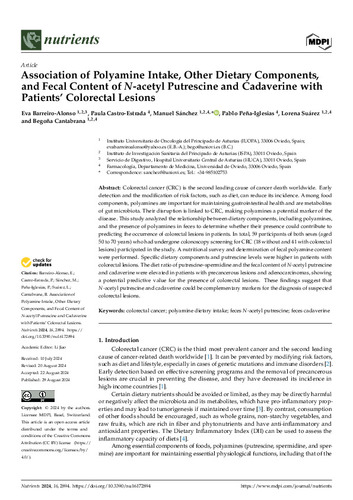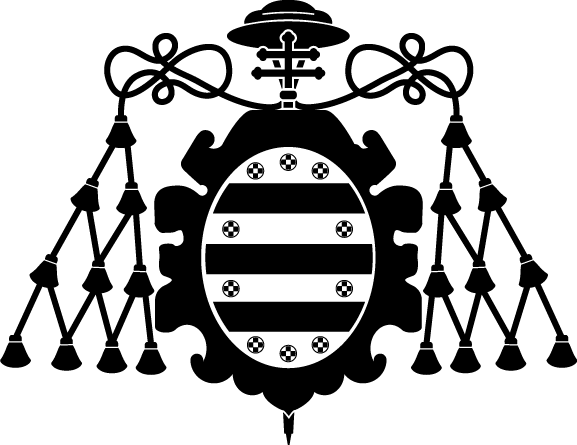Association of Polyamine Intake, Other Dietary Components, and Fecal Content of N-acetyl Putrescine and Cadaverine with Patients' Colorectal Lesions
Palabra(s) clave:
colorectal cancer; polyamine dietary intake; feces N-acetyl putrescine; feces cadaverine
Fecha de publicación:
Versión del editor:
Citación:
Resumen:
Colorectal cancer (CRC) is the second leading cause of cancer death worldwide. Early detection and the modification of risk factors, such as diet, can reduce its incidence. Among food components, polyamines are important for maintaining gastrointestinal health and are metabolites of gut microbiota. Their disruption is linked to CRC, making polyamines a potential marker of the disease. This study analyzed the relationship between dietary components, including polyamines, and the presence of polyamines in feces to determine whether their presence could contribute to predicting the occurrence of colorectal lesions in patients. In total, 59 participants of both sexes (aged 50 to 70 years ) who had undergone colonoscopy screening for CRC (18 without and 41 with colorectal lesions) participated in the study. A nutritional survey and determination of fecal polyamine content were performed. Specific dietary components and putrescine levels were higher in patients with colorectal lesions. The diet ratio of putrescine–spermidine and the fecal content of N-acetyl putrescine and cadaverine were elevated in patients with precancerous lesions and adenocarcinomas, showing a potential predictive value for the presence of colorectal lesions. These findings suggest that N-acetyl putrescine and cadaverine could be complementary markers for the diagnosis of suspected colorectal lesions.
Colorectal cancer (CRC) is the second leading cause of cancer death worldwide. Early detection and the modification of risk factors, such as diet, can reduce its incidence. Among food components, polyamines are important for maintaining gastrointestinal health and are metabolites of gut microbiota. Their disruption is linked to CRC, making polyamines a potential marker of the disease. This study analyzed the relationship between dietary components, including polyamines, and the presence of polyamines in feces to determine whether their presence could contribute to predicting the occurrence of colorectal lesions in patients. In total, 59 participants of both sexes (aged 50 to 70 years ) who had undergone colonoscopy screening for CRC (18 without and 41 with colorectal lesions) participated in the study. A nutritional survey and determination of fecal polyamine content were performed. Specific dietary components and putrescine levels were higher in patients with colorectal lesions. The diet ratio of putrescine–spermidine and the fecal content of N-acetyl putrescine and cadaverine were elevated in patients with precancerous lesions and adenocarcinomas, showing a potential predictive value for the presence of colorectal lesions. These findings suggest that N-acetyl putrescine and cadaverine could be complementary markers for the diagnosis of suspected colorectal lesions.
DOI:
Patrocinado por:
This work was supported by a Grant from Instituto de Investigación Sanitaria del Principado de Asturias (ISPA) (Convocatoria Intramural para el Fomento de Proyectos de Investigación 2018). Pablo Peña-Iglesias was recipient of a grant Collaboration Scholarships for Students in University Departments from the Ministry of Education, Culture and Sports (Spain).
Colecciones
- Artículos [37324]
- Investigaciones y Documentos OpenAIRE [8294]
- Medicina [971]
Ficheros en el ítem





